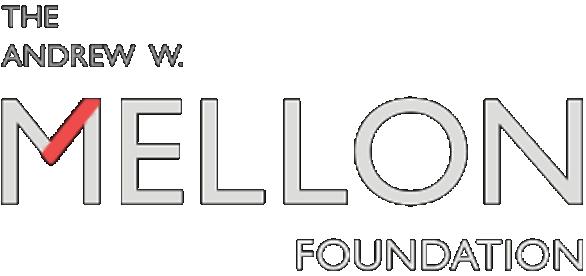Metadata Acquisition
About Metadata
Metadata is defined as "data about data." In our case, metadata refers to additional data about our novels aside from the stories within them. While acquiring metadata doesn't involve any natural language processing, this data is still important for a variety of purposes, including analysis:
Analysis Metadata
- Author
- Title
- Publication date
- Publication country
- Author gender
- Project Gutenberg-defined subjects
You can see that having the publication date would be useful for doing analysis of how literature changes over time, or how having the author gender would be useful for comparing how male and female authors represent their characters. This kind of information would often be difficult or impossible to determine simply by analyzing the text.
Filtering Metadata
- Publication date
- Copyright status
- Language
- Translation status
- Project Gutenberg-defined subjects
These metadata are important for keeping the corpus clean and making sure only desired novels are included. For example, we don't want any novels in Chinese. However, not all of this metadata is actually saved by us— there's no reason to keep track of novel languages if we expect to only keep those that are in English.
There's also some metadata that we associate with the books to make them easy to access and process but which aren't directly connected with analysis or filtering.
Additional Metadata
- Gutenberg ID
- Corpus Name
- Notes
The Gutenberg ID of a novel is useful as a specific and unambiguous identifier for naming files and also looking up specific novels. The corpus name allows us to distinguish books in our final corpus from the initial 100 sample novels that we gathered. Notes are for anything unusual about a novel, and are usually left empty.
Metadata Sources
Where do we get metadata?
Project Gutenberg
The source for our novels has some important metadata already. This includes the author, title, language, copyright status, and a convenient ID numbering system, and can be trusted to be generally reliable.
The metadata on Project Gutenberg is stored in a single giant RDF file. To handle this rather difficult file type, we used the gutenberg module. Processing can take several hours, but it only needs to be done once on the machine that acquires the metadata.
Unfortunately, Project Gutenberg doesn't provide important metadata like the publication date, so we need to look elsewhere. But the author and title are important for looking up books in other databases.
Wikidata
Using the pywikibot module and given a unique page ID, one can fairly simply access the information for that page.
The only catch is that if some desired information has its own Wikidata page, you get its page ID back, not the name. This means you have to either match the ID to the page title or go look up the name from Wikidata.
The main issue with Wikidata is that although it contains many random things, it doesn't contain many of the more obscure books. Unfortunately, working with the Library of Congress and WorldCat API's was difficult, so we were unable to incorporate them into our metadata acquisition before the deadline. However, there are some tricks to patch up those holes:
From the Text
There are a couple things that can be extracted from the text. For
example, most books have a copyright statement that looks like
COPYRIGHT. 1845. Using a regular expression, it's possible to get a lot of publication dates from the copyright statements.
One can also usually be fairly sure that an author named "Mary Istabal" is probably female. Using the gender-guesser module, we automated this process for cases where we couldn't find the author on Wikidata.
Generating the Metadata
Because some metadata is needed to filter out the books, we decided to generate the corpus and
metadata at the same time.
(Read more about generating the corpus here.)
To generate the corpus, we loop through every single Gutenberg ID number from zero to 70,000. With each ID number, the book is first tested to see if it meets our requirements. Then the metadata is acquired and written to a CSV file.
In the process of generating the corpus, we found that we had more than enough novels. So greater emphasis was put on ensuring that included books were valid novels, even if it led to the exclusion of some legitimate novels. We checked novels for
- Language and copyright status using the gutenberg module
- Certain keywords in the Gutenberg-defined subjects that indicated nonfiction or periodicals, like
correspondence. All novels had to contain the wordfictionin their subject categories. - Publication dates between 1770 and 1922
- Certain phrases in the titles like
Index of the Project Gutenberg Works of... - Indications that the text was a translation, like the presence of the string
Translator:in the text - The length of the text: all novels had to be between 140,000 and 9,609,000 characters.
For the methods that actually acquired the metadata, we would first try to get metadata from the most reliable source (in this case, the book itself), and if that failed we would try every method from most reliable to least reliable in turn, before giving up. (For example, if the Library of Congress metadata acquisition was implemented, it would take first precedence).
With a good computer, it is possible to go through all the books from Project Gutenberg and generate a corpus with metadata in several hours.
Future Plans
In addition to fixing bugs, future contributors may look into restructuring the code in the manner described above in order to improve its efficiency. Integrating the WorldCat and Library of Congress API's would also give a greater breadth of reliable information, allowing for an increase in the size of the corpus without compromising quality. Other ventures could include looking to include more types of metadata: the author's country of origin, or the age of the author when the novel was written, for more diverse analyses.
We hope that our first effort may provide a valuable starting point for others to build off of.



